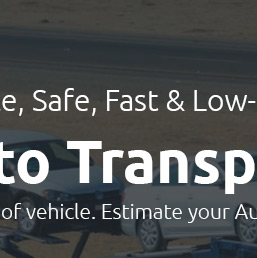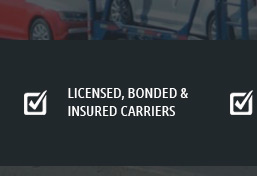 |
|
||||
 |
 |
 |
 |
||
 |
 |
|||||
 |
 |
 |
 |
 |
 |
 |
||
 |
 |
 |
 |
 |
 |
 |
 |
 |
 |
 |
|
 |
How to Ship Your Car: A Comprehensive GuideShipping a car can seem daunting, but understanding the process can ease the stress and ensure a smooth transition. Whether relocating for a job, purchasing a vehicle from another state, or sending a car to a college student, knowing how to ship your car effectively is essential. Why Ship Your Car? The benefits of shipping a car rather than driving it are numerous. Firstly, it saves time; long-distance driving can take days, while shipping a car allows you to fly and arrive at your destination much faster. Additionally, it reduces wear and tear on your vehicle. Long drives can put a lot of strain on a car, potentially leading to costly repairs down the line. Furthermore, shipping a car is often more economical than one might think, especially when factoring in the costs of fuel, lodging, and food on a long road trip. Choosing the Right Shipping Method There are several methods available, each catering to different needs and budgets. Open transport is the most common and affordable option. It involves loading the car onto an open trailer, similar to those used by dealerships. While this method exposes the car to the elements, it is generally safe and widely used. On the other hand, enclosed transport offers more protection by keeping the vehicle in a covered truck, ideal for luxury, classic, or high-value cars. This method is more expensive but provides peace of mind against potential damage from weather or road debris.
Preparing Your Car for Shipping Before handing over your keys, there are several steps to prepare your car for transport. Clean your vehicle inside and out; this not only makes it easier to inspect for damage but also ensures no personal items are lost or damaged during transit. It's advisable to remove all personal belongings as they are typically not covered by insurance and can add unnecessary weight. Additionally, ensure your car is in good working order with no leaks, a quarter tank of fuel, and properly inflated tires. Disable any alarms to prevent them from going off during transport, and secure or remove any loose parts or accessories. Choosing a Reliable Shipping Company Researching and selecting a reputable car shipping company is crucial. Look for companies with strong reviews, proper licensing, and insurance. Request quotes from multiple providers to compare prices and services, and don't hesitate to ask questions about their processes, insurance coverage, and estimated delivery times. Trustworthy companies will be transparent and communicative, providing all necessary information to reassure you of your vehicle's safety. Insurance and Liability Understanding the insurance coverage provided by the shipping company is vital. Most reputable companies offer adequate insurance coverage, but it's wise to verify the extent and limitations. Consider supplemental insurance if your car is of high value or if you desire additional peace of mind. Conclusion Shipping your car can be a seamless and stress-free experience with the right preparation and research. By understanding the options available and taking necessary precautions, you can ensure your vehicle arrives safely and on time, allowing you to focus on the excitement of your new journey. https://www.matson.com/how-to-prepare-for-shipping-your-car.html
Wash your vehicle before dropping it off at the port. All vehicles must have a clean exterior so that a vehicle survey may be conducted at the load port. https://www.quora.com/Is-it-legal-to-ship-items-inside-a-car-trunk-without-any-personal-belongings-inside
Of course, you may leave some of your belongings in the car during its transportation. Still, professional car shipping organizations recommend ... https://www.reddit.com/r/projectcar/comments/1191wan/shipping_car_cross_country_requesting_advice_on/
If you're shipping long-haul (2000-3000 miles), carrier's rates should range from about $0.35 to $0.45 per mile, but more is always better for them.
|
